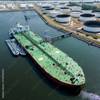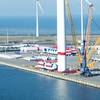Fuel Flexibility is Key for Green Shipping
Fuel flexibility and technologies to bridge changing fuel usage have been identified in the Maritime Forecast to 2050 as essential strategies for both individual owners and the shipping industry to adapt to the energy transition and prepare for a low carbon future.
DNV GL – Maritime has released the third edition of its Maritime Forecast to 2050 at London International Shipping Week 2019 (LISW).
The Maritime Forecast examines the future of the shipping industry in a rapidly changing global energy landscape. This year’s report focuses on the challenge of reducing the carbon intensity of the global fleet to meet the ambitious targets set by the IMO’s greenhouse gas reduction (GHG) strategy.
In the deep-sea segment especially, dual-fuel solutions and alternative fuel “ready” solutions could smooth this transition, by laying the groundwork for a future retrofit. Combined with bridging technologies such as adaptable storage tanks, onboard systems and shore-side fuel infrastructure, this could give the industry more options as new fuels and technologies emerge.
“Ships built today will have to compete with vessels coming onto the market in five, ten or 15 years’ time, and must consider future standards to remain competitive,” said Knut Ørbeck-Nilssen, CEO of DNV GL – Maritime.
“Considering the uncertain future that lies ahead, failing to be future-proof in the newbuilding phase could lead to that asset being stranded in the not so distant future. In addition, CO2 emissions could become an important rate differentiator and we have already seen forward-looking charterers start down this road,” Knut added.
The Forecast shows that the uptake of low-carbon and carbon-neutral fuels is essential to meeting IMO GHG goals, with carbon-neutral fuels having to supply 30–40% of the global fleet’s total energy by 2050. Under different regulatory pathways, however, the model predicts that a variety of fuels could come to the fore.
In all of the pathways, liquefied methane (from both fossil and non-fossil sources) provides a large part (40–80%) of the fuel mix at 2050. The Forecast also suggests that in the deep-sea sector, ammonia, biodiesel, liquid biogas and electrofuels are promising carbon neutral options, with battery, hybrid, and hydrogen solutions being potential options for the short-sea segment.
The ongoing energy transition is starting to reshape the shipping industry, with much uncertainty on the way to 2050. DNV GL’s Maritime Forecast to 2050 hopes to offer the industry a vision of the changes ahead, offering guidance, highlighting trends, and providing valuable insights for maritime stakeholders.
The Maritime Forecast to 2050 is part of a suite of Energy Transition Outlook (ETO) reports produced by DNV GL. The ETO has designed, expanded and refined a model of the world’s energy system encompassing demand and supply of energy globally, and the use and exchange of energy between and within ten world regions.














